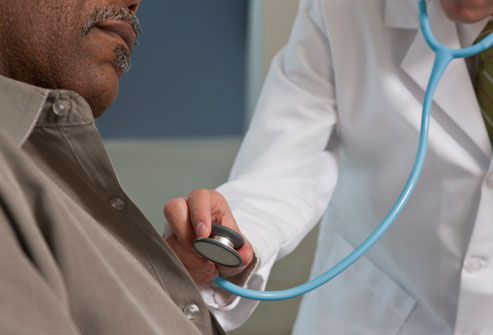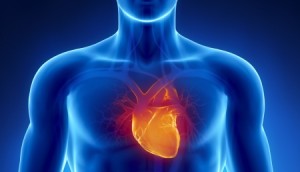Afib Explained
About 2.7 million Americans have afib, a type of heart disease.
The term fibrillation refers to a fluttering, disorganized type of heartbeat, also known as heart flutter.
“Atrial fibrillation tops the list of abnormalities that can occur in the heart’s normal rhythm,” says Douglas C. Westveer, MD, chief of cardiovascular disease at Beaumont Hospital in Troy, Mich.
According to the American Heart Association, about 2.7 million Americans have atrial fibrillation, or afib.
“Even more alarming, the incidence of atrial fibrillation is increasing and may reach epidemic proportions as more baby boomers enter older age groups,” notes Dr. Westveer.
Understanding Afib
Your heart has four chambers inside of it: a left and right ventricle, and a left and right atruim (plural: atria).
Normally, an electrical signal from the sinus node in the right atrium starts the heartbeat. The electrical impulse then travels to the left atrium and down to the two ventricles, causing the heart muscles to contract. In most people, this sequence occurs about 60 to 100 times a minute, creating a regular heartbeat.
But in atrial fibrillation, electrical signals begin in other parts of the two atria (or in nearby veins), creating an irregular storm of electrical signals.
The heart rate can then be as rapid as 400 to 600 beats a minute, explains John Miller, MD, an electrophysiologist at Indiana University Health in Indianapolis.
These electrical impulses are all trying to cause the ventricles to beat, Dr. Miller explains. The heart’s switching station, called the atrioventricular node, protects the ventricles from some of the extra impulses, but it can’t stop them all, and the ventricles begin to beat and quiver wildly.
And because the ventricles aren’t beating properly, blood isn’t pumped out of the heart effectively, and it may collect inside the heart, where it can form blood clots.
Atrial Fibrillation Symptoms
Symptoms of atrial fibrillation may include:
- The sensation of heart flutter known as palpitations
- Shortness of breath
- Fatigue
- Dizziness
- Chest pain
Causes and Risk Factors for Atrial Fibrillation
Atrial fibrillation is associated with many different conditions including:
- Heart disease
- High blood pressure
- Chronic lung disease
- Overactive thyroid gland
- A blood clot that lodges in the lungs
In about 10 percent of people with atrial fibrillation, an underlying cause is never identified.
The biggest risk factors for atrial fibrillation are age and underlying heart disease, such as coronary artery disease or heart valve disease. Risk increases after age 60.
By age 65, about 4 percent of people will have atrial fibrillation. Other risk factors include smoking, excessive caffeine, and stress.
Complications of Atrial Fibrillation
The two big complications from atrial fibrillation are blood clots and heart failure. Blood clots occur because blood that is not moving normally tends to clot.
“Blood clots may form inside the atria over time and are a leading cause of stroke,” says Westveer. A stroke can occur when a blood clot leaves the heart and gets lodged in an artery inside the brain. About 15 percent of all strokes happen in people with atrial fibrillation.
Heart failure occurs because the heart is not beating effectively and gradually gets weaker and weaker. Heart failure symptoms such as fatigue, shortness of breath, and fluid retention can develop over time as atrial fibrillation makes the heart work harder and grow weaker.
Fortunately, there are many options to help prevent stroke and heart failure symptoms.
“Although the prevalence of atrial fibrillation continues to increase, new treatment strategies are opening a brighter outlook for its management. The treatment choices should be fully discussed with your doctor,” says Westveer.
Bizzee Health and Fitness – There are different types of Atrial Fibrillation and they have different affects on the patient. If you have any of the above symptoms please see a doctor and get checked out! Help is available in the form of prescription drugs to medical procedures…Your doctor will lay out the options available for you…Be well!








